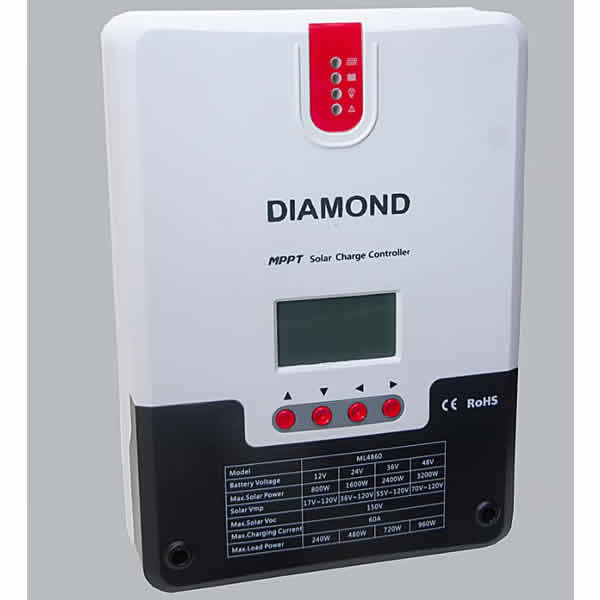
A charge controller or charge regulator is basically a voltage and/or current regulator to keep batteries from overcharging. It regulates the voltage and current coming from the solar panels going to the battery. Most “12 volt” panels put out about 16 to 20 volts, so if there is no regulation the batteries will be damaged from overcharging. Most batteries need around 14 to 14.5 volts to get fully charged.
A solar charge controller manages the power going into the battery bank from the solar array. It ensures that the deep cycle batteries are not overcharged during the day and that the power doesn’t run backwards to the solar panels overnight and drains the batteries. Some charge controllers are available with additional capabilities, like lighting and load control, but managing the power is its primary job.
A solar charge controller is available in two different technologies, PWM and MPPT. How they perform in a system is very different from each other. An MPPT charge controller is more expensive than a PWM charge controller, and it is often worth it to pay the extra money.
You’ll notice that solar charge controllers are specified by both amperage and voltage. You will need a solar controller that matches the voltage of your solar panel array and battery bank and you’ll want to make sure the solar charge controller has enough capacity to handle the current (in amps) from your solar panel array.
LGS LTD has Charge controllers specially designed to work with all established module technologies and are optimized for solar systems with module voltages higher than the battery voltage.
Don’t hesitate to contact us for more information about company or service

As this climate friendly and highly sustainable source of energy continues to ride the roost, we continue to excel with our innovative and futuristic technology, leading the way with our dream of reaching every household in Africa with brighter and greener tomorrow.